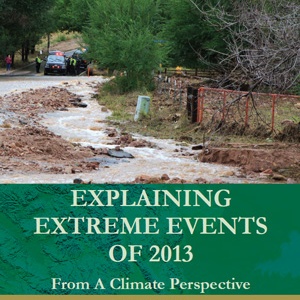
This report entitled “Explaining Extreme Events of 2013 from a Climate Perspective” is the fourth in a series of annual reports published by the US National Oceanic and Atmospheric Administration. It provides an assessment of how climate change may have affected the strength and likelihood of individual extreme events.
The researchers investigate 28 individual extreme events in 2014 and assess various factors that led to the extreme events, including the degree to which natural variability and human-induced climate change played a role. When human influence for an event cannot be conclusively identified with the scientific tools available today, this means that if there is a human contribution, it cannot be distinguished from natural climate variability. The report this year added analysis on new types of events including wildfires and Antarctic sea ice extent, and in one case looked at how land use patterns may influence the impacts and severity from precipitation.

It finds that human generated greenhouse gas emissions and land use related activities influenced a number of extreme weather and climate events in 2014, including tropical cyclones in the central Pacific, heavy rainfall in Europe, drought in East Africa, and heat waves in Australia, Asia, and South America.
Location and type of events analysed in Explaining Extreme Events of 2014 from a Climate Prospective.
Read the full report here and see further coverage here.
You can find resource related to climate change: impacts and adaptation, vulnerability, and resilience.












Post a new comment »